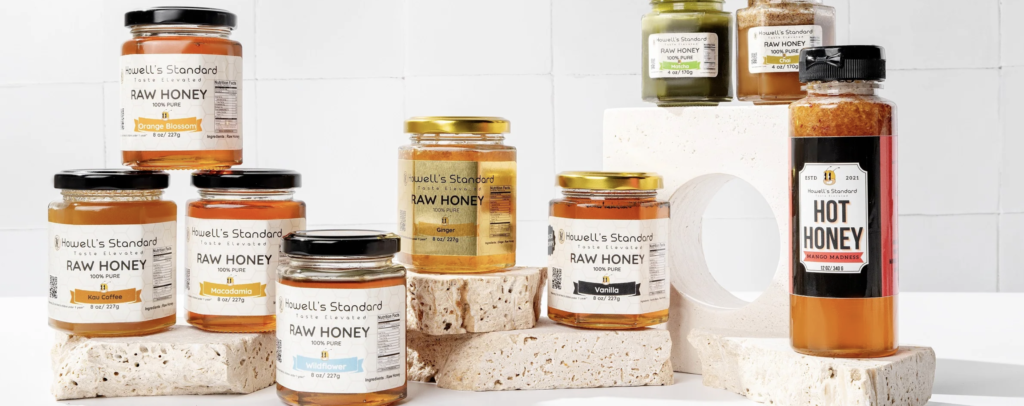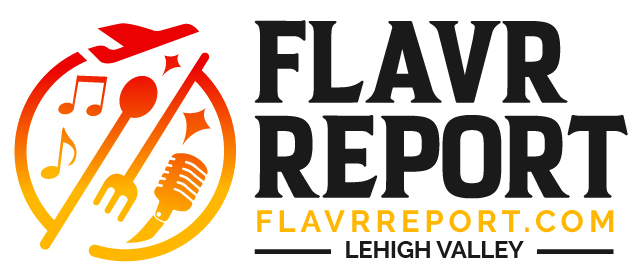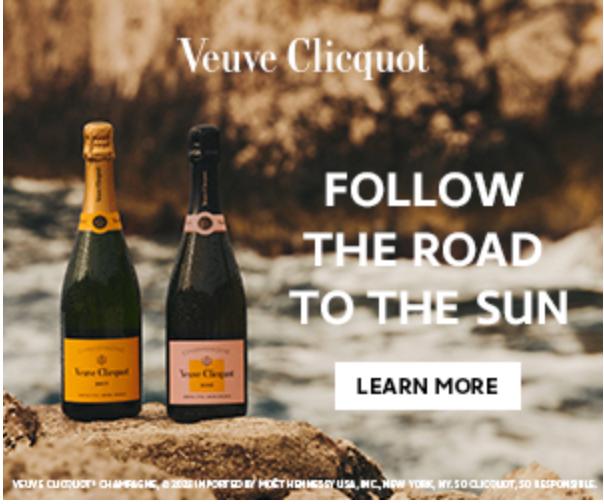Lehigh Valley wants Family and Flavor — Howell’s Standard Hot Honey Delivers On Your Plate
Howell’s Standard provides raw, natural honey in its purest form, a variety of herb and fruit-infused honeys, and products from the hive.
They are a small family-owned company in Northeast Maryland that appreciates the gifts of nature and artistic expression. Find their website, their Instagram and their in-person farmer’s market experience.

Below, Alexander and Monica Howell visited for a conversation about family, flavor, health benefits and the magic of honey.

This conversation has been edited for length and clarity. Find the full, unedited conversation on the FlavRReport YouTube channel.
My understanding going back to the beginning is, this whole company was a COVID baby, meaning the idea of it launched during the pandemic. Is that accurate?
Alexander Howell: So I’ll give you a bit of a backstory. We had, like you said, started around the boom of COVID. During that time with all the sickness going around, one of the things we decided to do was to figure out how we can stay healthier and keep the entire family more healthy during that entire time.
One of the things we decided to do was to cut out a lot of white and processed sugars because it’s the cause of a lot of health issues, cancers, things of that nature. After that we [realized] we can’t just not have any type of sweetener at all. We’re not that strong.
We went across a couple of different sweeteners. We tried agave, we tried monk fruit. We tried all those, [but] they didn’t hit the spot for us.
Then we were at a farmer’s market [and] tried some raw honey. Once we had tried that, it’s like the entire world just opened up for us because.
We started researching it more and found out there were tons of health benefits tied into raw honey itself.
Once we started consuming it ourselves, we felt the changes. A lot more energy naturally, our skin started looking a lot better, our hair started looking better. Then we decided instead of keeping this a family secret, we can share it with the world.
Monica Howell: So I’ve got a slightly different angle on it. Everything Alex said is definitely true. Pre COVID, I had always been an entrepreneur at heart, always dabbling in something, always doing a little side things. They say you have to have multiple streams of income.
So I was always looking for the next best option. Prior to COVID, I was creating body butters and detox masks and sugar scrubs; and just looking for things that were positive for your skin in a natural manner. Honey was one of the ingredients that was always on my shelf.
[Honey] is one of those ingredients. It’s a wonderful connector. I had really only ever thought of honey as this thing that was on aisle number eight of the grocery store always next to the maple syrup. A condiment to get with your fried chicken.
But once I started having success with personal skin care, the products that were most sought after, that had the best outcomes for my skin all had honey in them.
During COVID, we just really started to come together more, having more conversations. Bringing together the things that we were doing individually as a group and kind of figuring out
We started minimizing ingredients. Looking at that 20 line ingredient list on the back of everything and saying what can [remove]?
Something you both touched on was the zero to one aspect. Talk a little bit about the process from idea to reality.
Monica Howell: So for me, it was checking boxes. Throwing something on the wall and seeing what sticks, that old spaghetti adage.
There’s so many layers, so many things that I wasn’t aware of honey as a whole.
Figuring out how we could integrate this into our lives, and then how we then convert that and transition that into something that was revenue generating, seeing there was a niche.
We started with friends and family. Letting people that would trust us, try things out.
A lot of the response was ‘I don’t like honey’ or ‘I already have sugar. I don’t need to do this.’
But we said, it’s open your mind, let’s look into something a little different. Let’s consider it in a different way and move forward from there.
One thing that I think stands out for us is the fact that everything that we do, all the honey options that we have available are all beneficial in some way, shape or form. You get the benefit of those things that are being infused into the honey. So everything is purposeful.
Everything added is to expand the benefits of the honey into something beyond.
Each honey is different, with different infusions. We call them varietals. Essentially a varietal is a honey that the beekeeper and the farmer have integrated hives into that particular crop. The honey has a flavor and nuance. Then we have our infusions.
Local honey is where I go. That’s all I want. Our local [honey] in Maryland is not the same local that’s in Texas. What’s local to California is not what’s local to Utah. What’s local to Utah is not local to Maine. But when you look at it, all those honeys have a slight variance and nuance in flavor because of what’s being pollinated.
Our plants aren’t the same here as in Hawaii. So when you say I enjoy wildflower, the enjoyment of your wildflower might taste completely different than what I’m used to because of the plants that are growing. It doesn’t necessarily all taste the same.
When you started with this idea, were you aware of the different varietals, the regions and how that affected honey?
Alexander Howell: We definitely didn’t know how intricate and how deep this kind of rabbit hole of honey goes. It’s a very nice and very informative learning experience for two reasons. One, just so we are aware of the benefits and can tell our family, but also so we can now have those kinds of conversations with our customers.
Monica Howell: Even something as a variance from season to season. Literally your spring honey can be a completely different product from your fall [honey] and your winter honey.
The amount of moisture that’s in the air, that can even be from location to location. April showers bring May flowers. Those April showers are happening, there’s a ton of moisture in the air. And then when you’re getting into the fall, you’re having the bees that are pollinated when you’re getting into the fall, there’s a variance in that same region.
That same area has shifted the temperature. You’re just coming out of 90 degree weather. There’s still flowers out. But the pollination process that’s happening, the bees are what they’re collecting now, it can be different.
In the U. S. alone, there’s over 300 different types of honey. Over the world, there are thousands.
The interesting thing is when we’re bringing those varietals together in one place, you actually taste them side by side, [you can taste and notice] there are definite differences that you may never [have noticed otherwise] .
Someone says, “I don’t like honey. I say, “Well you haven’t tasted my honey.”
They find out, they dont like wildflower from North Carolina, but they love sage from California or macadamia nut from Hawaii – it’s amazing.
You’ve both mentioned farmer’s market experiences, sampling and buying. Let’s talk a little bit about those experiences.
Alexander Howell: As far as farmers markets goes, we’ve gotten the entire spectrum of reactions – ‘Oh, this is some of the best I‘ve ever had in my life’, or ‘This is nasty’
I appreciate either side of the spectrum, it’s just very honest and blunt. In person, you get to actually see that emotion, you get to see that interaction, you get to not only see what they think but maybe they brought a friend or a family member of theirs – their husband, their wife, their kids, their dog.
We get to see what your dietary needs are, your favorite flavors, your favorite vegetables. If you have a health issue, what type of things we have that could possibly help.
It’s even as simple as someone getting a gift for somebody who’s a pescatarian who likes to cook so, ‘What do you have for this?’
And I can then give them a whole range of stuff [to browse].
Monica Howell: We’ve been selling at farmer’s markets for 2.5 years. By far, it is my favorite. People who grew up going to farmer’s markets. Beekeepers that have grown up in their Grandma’s backyard.
We always get somebody that says, ‘Oh, my grandma had honey. And I’m already familiar.’ I always challenge them to taste something that’s a little different,
We get people who are extremely health conscious. They are looking for natural options.
On your website, there’s a lot of products What are the major categories and what are one or two or three that you really want to highlight that are currently available?
Monica Howell: We do some switching out from season to season, but for the most part, 25 items. A combination of the varietals and the infusions.
We’ve got an amazing macadamia nut honey that comes from Hawaii. You get a honey that has a certain butteriness to it, a nice weight to it. A little nuttiness at the end. It’s amazing in coffee. It’s amazing on top of a banana bread, really good in yogurt. Also good to cook with.
Our blueberry is from Maine. A little bit of a nuance of that blueberry flavor. It’s a little sweeter than some of the other honeys. It’s amazing on bakery goods and breakfast. So instead of using traditional maple syrup, we’re using the blueberry honey on a Belgian waffle on a pancake. Amazing on yogurt and things like that.
Then we’ve got our infusions. So the infusions essentially are different botanicals using a particular honey.
I’m using an extra white honey from Iowa. If you’re looking on the spectrum of honey, not only does honey change area to area, there’s water white honey, all the way down to your dark amber honeys. So there’s an entire rainbow of different types of honey, based on what’s being pollinated and what’s growing.
Your darker honeys have more of a molasses flavor, probably 10 – 20 x the antioxidants that you’re getting then like a water white honey. But when we’re considering what to use to infuse, I’m usually going with that lighter honey.
Our elderberry honey is super important. We’re taking a ground elderberry from the actual berry, not the elderberry flower. And we’re grinding that up and then infusing that into honey over a period of time. That allows you to then take that elderberry on a regular basis, either in as a sweetener for your tea or actually adding it into a yogurt.
Alexander Howell: Some of the things that I like to highlight, because I’m a foodie, I’m always trying to find honey that would elevate the taste.
One of those is Hot Honey. Anything from chicken, to beef, to pork, to seafood, to shellfish. I love it all. One specific thing is strawberries. It sounds a little out there, but it’s amazing.
And also the vanilla. I love it on my baked goods, banana breads, cornbread, really good on cinnamon rolls. Instead of the sheet icing I’ll put the honey. Even simpler like a latte or a cup of tea. Put some of your pancakes or crepes.
It’s the two different honeys on two different ends of the spectrum, but at the end of the day they both serve their purposes
Monica Howell: We are working with a few bartenders and mixologists that have taken our honeys and creating mocktails. Super fun.
One thing to acknowledge, the audience is a large majority of our conversations are wine based. So it’s with winemakers and chefs.
Do any of these honeys pair better with any specific kinds of varietals of wine?
Alexander Howell: One of the best ways I do like to enjoy wine with honey is charcuterie.
Monica Howell: Charcuterie and honey go hand in hand. It’s like a whole little puzzle of delicious-ness.
I like Merlot. Something becoming more popular are meads. So mead is wine essentially made with the foundation of honey versus grapes. There are a lot of brewers that are starting to play with mead. So you’ll find mead in all different varietals, some that very much tastes like wine and some that tastes closer to beer.
We’re not necessarily pairing the wine so much with the honey as helping the person that’s hosting the event, creating that perfect board, that perfect accompaniment to it.
What’s the best way to learn more about you? Website, social media? How can we follow you more?
Monica Howell: Definitely the website is the easiest way. You can also find us on Facebook and Instagram. The unique feature of what we do in-person. That’s the benefit of coming to see us at a farmer’s market. We also are actually on a couple of stores in the local area, local by design, which is an Annapolis mall in Annapolis, Maryland, where our product is available on their shelves.
You can find gifting boxes and samplers on the website too.



